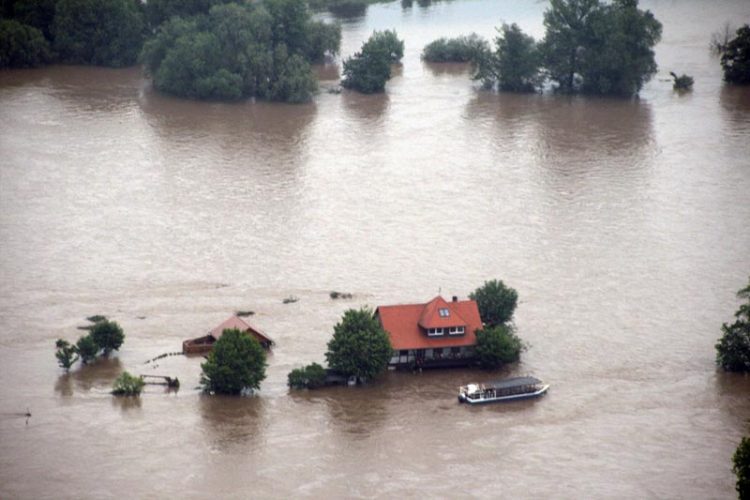How costly are natural hazards?

Flood in Grimma, June 2013 (Image: A. Krahn, GFZ)
Cost assessments of natural hazards often only cover direct costs and even these are assumed to be at least 50% higher than international assessments report. However, besides direct damage, also indirect damage is relevant.
For example, the Thailand flood in 2011 shut down scores of factories and damaged global car manufacturing and electronics industries. But, an improved precaution requires better understanding of the total costs, which comprise besides damage also risk mitigation costs.
Only like that an efficient risk management of natural hazards can be achieved.
An international group of scientists led by Heidi Kreibich (German Research Centre for Geosciences GFZ) has now for the first time suggested an integrated cost assessment in risk management. In the current issue of “nature climate change” the group drafts the new cost assessment cycle.
“Cost-benefit analyses that exclude certain cost categories lead to sub-optimal decisions,” Heidi Kreibich explains the approach, “The cost assessment cycle involves the continuous monitoring of costs associated with natural hazards risk management, thus enabling the early detection of inefficient risk mitigation strategies.”
A close link between the cost assessment cycle and the risk management cycle lead to an improved assessment of the real costs and as such to a stable basis for an improved decision making in risk management.
The possibility to make better, more efficient decisions for natural hazard risk management will gain even more importance in view of global environmental change.
Pictures in a printable resolution may be found here: http://www.gfz-potsdam.de/en/media-communication/image-galleries/flood-research/
H. Kreibich et al. „Costing natural hazards”, Nature Climate Change, Vol.4, 25.04.2014, pp. 303, doi:10.1038/nclimate2182
Media Contact
All latest news from the category: Earth Sciences
Earth Sciences (also referred to as Geosciences), which deals with basic issues surrounding our planet, plays a vital role in the area of energy and raw materials supply.
Earth Sciences comprises subjects such as geology, geography, geological informatics, paleontology, mineralogy, petrography, crystallography, geophysics, geodesy, glaciology, cartography, photogrammetry, meteorology and seismology, early-warning systems, earthquake research and polar research.
Newest articles

A universal framework for spatial biology
SpatialData is a freely accessible tool to unify and integrate data from different omics technologies accounting for spatial information, which can provide holistic insights into health and disease. Biological processes…

How complex biological processes arise
A $20 million grant from the U.S. National Science Foundation (NSF) will support the establishment and operation of the National Synthesis Center for Emergence in the Molecular and Cellular Sciences (NCEMS) at…

Airborne single-photon lidar system achieves high-resolution 3D imaging
Compact, low-power system opens doors for photon-efficient drone and satellite-based environmental monitoring and mapping. Researchers have developed a compact and lightweight single-photon airborne lidar system that can acquire high-resolution 3D…





















